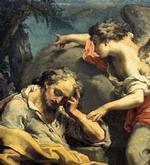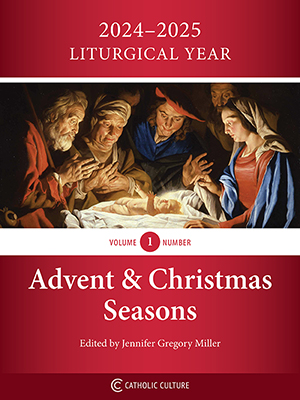Our Lady of the Catacombs
by Zsolt Aradi
In our present world, religious worship, churches and shrines have become part of life. Even for those who for one reason or another have never believed or have lost their faith, a church building does not generally evoke sentiments of hostility. We have incorporated into our Western language thousands of words, which, in previous ages, or for the faithful today, have profound meaning. Buildings and street names, which are related to the name of a saint or even to Our Lady, are as ordinary as anything else in the routine flow of life.
In the early ages of Christianity, however, the expression of this forbidden, concealed faith was fraught with extreme danger; it was literally a question of life and death. Human history has produced savage periods of bias, persecution and cruelty. Our age certainly cannot boast of being one of understanding and tolerance. There were, in fact, more people killed and imprisoned for their beliefs in the twentieth century than in any previous century. But the age of the catacombs, in which people were brutally persecuted because they preached their religion of love, has not been surpassed in its visible expression of drama. The catacombs call to mind after nearly two thousand years not only those beleaguered Christians who first hid there, but the many dark undergrounds throughout history into which men have been forced by the persecution of their fellow men.
The catacombs are one of the strongest proofs of the historical reality of the origins of Christendom. Thus, it is not surprising that one of the catacombs, the so-called cemetery of St. Priscilla, beneath the Basilica of St. Silvester, the Pope, contains a most precious painting, which represents the Blessed Virgin seated with the child Jesus on her knee. In the figure standing left of Our Lady, historians and theologians have discerned the Prophet Isaias, whose prophecy first predicted the Incarnation: "The Lord himself shall give you a sign. Behold a Virgin shall conceive and bear a son, and his name shall be called Emmanuel." There is a star between Isaias and the Blessed Mother representing the Star of Bethlehem, and to the left of Isaias the branches of a blossoming tree extend over the group. The tree represents another prophecy of the Old Testament: "The Rock of Jesse hath blossomed; a Virgin hath brought forth Love and Man." It is evident that the early Christians bestowed veneration on Mary soon after her Assumption into Heaven. This picture, which has the distinct characteristics of the non-Christian Roman paintings, found in excavations, dates from the end of the second century--and, according to experts, more specifically from around a.d. 170.
The image of the Madonna with her child in the catacombs must be considered as one of the first, if not the first of all holy images, the prototype of so many icons, figures and paintings representing Our Lady and the saints and martyrs of the Church. In spite of the fact that two thousand years' adventurous history of Rome saw the city occupied, invaded and ransacked by her enemies, and despoiled by her own citizens, this image remained almost completely intact.
Our Blessed Lady and the Holy Child in the Catacomb of St. Priscilla is a great work of art. The colors of the picture are by now faded and the features not completely clear, but the attitude of the seated Madonna and the Child are magic and radiant. The Child sits on his mother's knee; at the same time, he looks back as if awaiting someone.
In this picture by an unknown painter, art and faith have joined to express primitively but truthfully, as perhaps never again, the bond between God and man. It was not intended as merely a work of art; an unknown genius worked with loving hands in this hidden place to create an image of the beloved Madonna so that he and his fellow Christians might share the sight of her down in the catacombs and when they faced the hostile world above, refresh their spirits with the memory of her gentle gaze.
This item 2981 digitally provided courtesy of CatholicCulture.org






